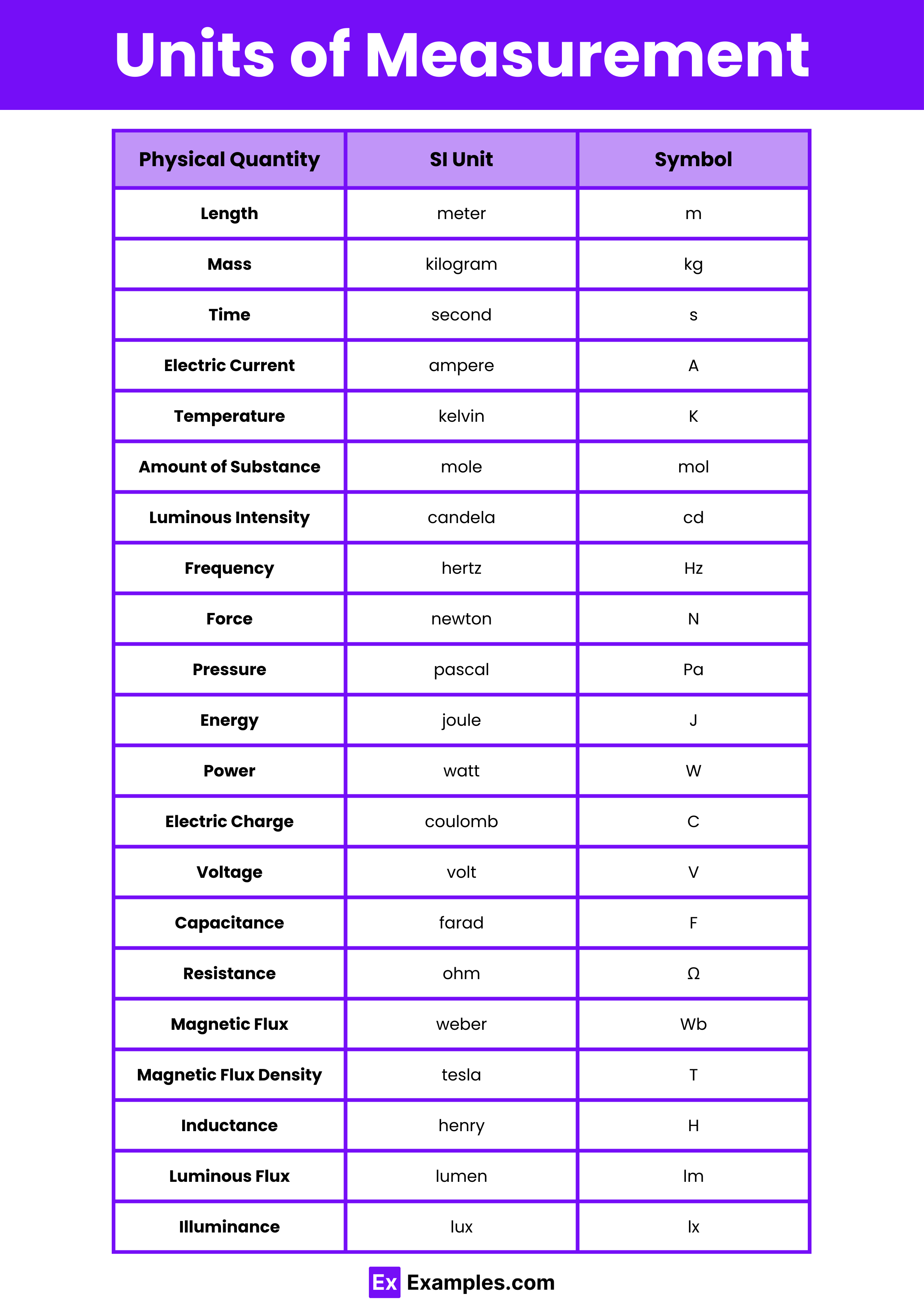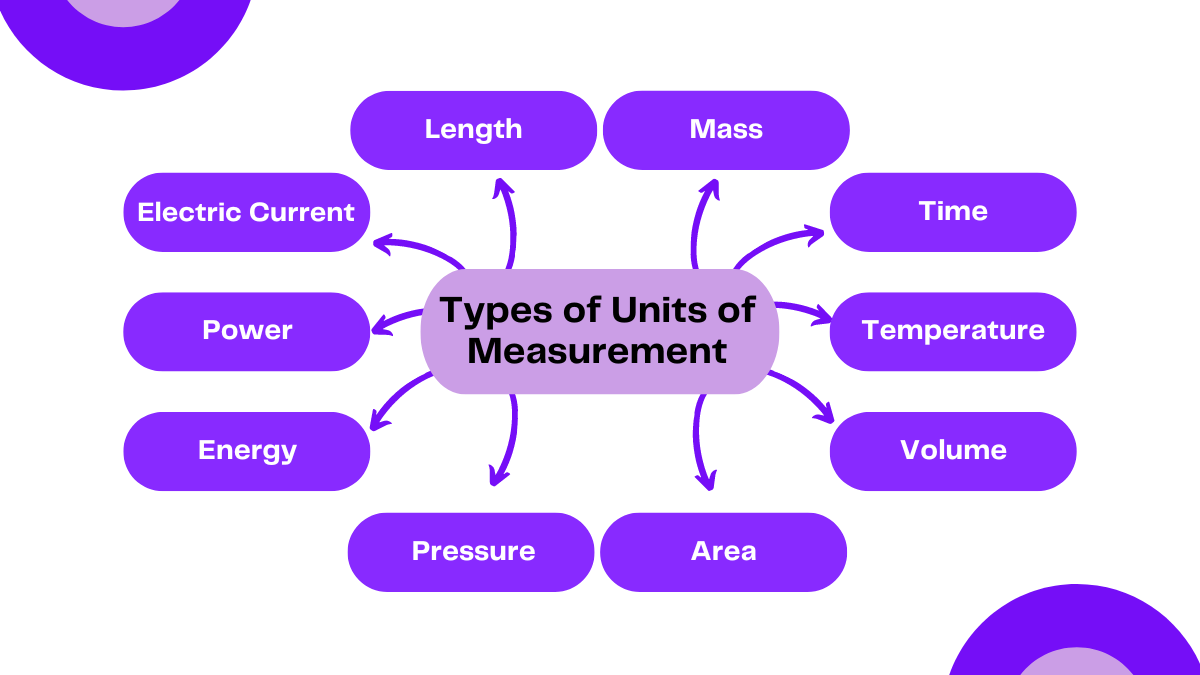What is the base unit of length in the metric system?
Gram
Liter
Meter
Joule

Units of measurement are crucial in ensuring reliability and consistency across various fields such as maths, science, commerce, and everyday activities. They serve as standardized references that enable precise quantification and communication of properties like length, weight, volume, and temperature. By adhering to these established norms, we can accurately measure, share, and compare data, facilitating effective decision-making and coordination. The adoption of these units worldwide underscores their role in maintaining coherence and efficiency, making them indispensable for the accuracy and dependability required in professional and daily life.
Initially, measurements were made using unconventional methods, including the use of body parts like the width of a hand, the length of a foot, or the span of an arm, leading to imprecise outcomes due to individual differences. Over time, the need for accuracy and consistency gave rise to the development of more reliable measurement systems. Today, we have the metric system, or the International System of Units (SI), alongside the Imperial system and US customary units, which have been globally recognized and adopted to ensure precise and uniform measurements across various fields and applications.

The International System of Units (SI) is a globally accepted system for measurements that standardizes the way we measure and report physical quantities. Established to provide a consistent framework for scientific and technical disciplines, the SI system is built on seven base units: the meter (m) for length, kilogram (kg) for mass, second (s) for time, ampere (A) for electric current, kelvin (K) for temperature, mole (mol) for the amount of substance, and candela (cd) for luminous intensity. These base units form the foundation from which all other SI units are derived, ensuring uniformity and precision across various fields of study and applications worldwide, from engineering and construction to healthcare and environmental science. This comprehensive system facilitates clear communication and comparison of measurement results, promoting international cooperation and advancements in science and technology.
| Physical Quantity | SI Unit | Symbol |
|---|---|---|
| Length | meter | m |
| Mass | kilogram | kg |
| Time | second | s |
| Electric Current | ampere | A |
| Temperature | kelvin | K |
| Amount of Substance | mole | mol |
| Luminous Intensity | candela | cd |
| Frequency | hertz | Hz |
| Force | newton | N |
| Pressure | pascal | Pa |
| Energy | joule | J |
| Power | watt | W |
| Electric Charge | coulomb | C |
| Voltage | volt | V |
| Capacitance | farad | F |
| Resistance | ohm | Ω |
| Magnetic Flux | weber | Wb |
| Magnetic Flux Density | tesla | T |
| Inductance | henry | H |
| Luminous Flux | lumen | lm |
| Illuminance | lux | lx |

Length measures the distance between two points. It’s a fundamental unit in measurement systems, commonly expressed in meters (m) or feet (ft).
Mass quantifies the amount of matter in an object. It is measured in kilograms (kg) in the metric system and pounds (lb) in the imperial system.
Time tracks the duration of events, from seconds to years. It’s a universal unit used across various disciplines, measured in seconds (s).
Temperature indicates the level of heat or coldness. Measured in degrees Celsius (°C), Fahrenheit (°F), or Kelvin (K), it’s crucial in daily life and science.
Volume measures the space an object or substance occupies. It’s expressed in liters (L) or cubic meters (m³) for liquids and gases.
Area quantifies the size of a surface. It’s measured in square meters (m²) or acres, used in land measurement and interior planning.
Pressure describes the force applied per unit area. Measured in pascals (Pa) or pounds per square inch (psi), it’s vital in physics and engineering.
Energy represents the capacity to perform work or produce heat. It’s measured in joules (J) and is essential in physics, chemistry, and biology.
Power quantifies the rate at which work is done or energy is transferred. Measured in watts (W), it’s key in electrical and mechanical systems.
Electric current is the flow of electric charge through a conductor. Measured in amperes (A), it’s fundamental in electrical circuits and devices.
Luminous intensity measures the brightness of a light source. It’s measured in candelas (cd) and is crucial in lighting and optical design.
The Imperial system, primarily used in the United States and the United Kingdom before metrication, includes a variety of units for length, mass, volume, and more. It originated from English units used in the British Empire. Key features include measurements like inches, pounds, and gallons, which are distinct from the metric system’s centimeters, kilograms, and liters.
| Physical Quantity | Imperial Unit |
|---|---|
| Length | Mile (mi), Yard (yd), Foot (ft), Inch (in) |
| Mass | Pound (lb), Ounce (oz), Stone (st) |
| Volume | Gallon (gal), Quart (qt), Pint (pt), Cup (c), Fluid Ounce (fl oz) |
| Temperature | Fahrenheit (°F) |
Standard units of measurement are universally accepted quantities used to quantify physical properties like length, mass, and time, ensuring consistency in communication and comparison of measurements globally.
An example of a unit is the meter, which is the standard unit of length in the International System of Units (SI), used to measure distance or length.
Text prompt
Add Tone
10 Examples of Public speaking
20 Examples of Gas lighting
What is the base unit of length in the metric system?
Gram
Liter
Meter
Joule
Which unit is commonly used to measure the volume of a liquid?
Kilogram
Liter
Meter
Newton
What unit is used to measure mass in the International System of Units (SI)?
Meter
Liter
Gram
Joule
Which unit measures energy or work done?
Watt
Ampere
Joule
Kelvin
What is the unit of temperature in the Celsius scale?
Kelvin
Joule
Meter
Degree Celsius
Which unit is used to measure electric current?
Ohm
Volt
Ampere
Coulomb
What is the base unit of length in the International System of Units (SI)?
Meter
Kilometer
Centimeter
Millimeter
Which unit is used to measure electrical resistance?
Ampere
Ohm
Watt
Joule
What unit is used to measure frequency?
Hertz
Joule
Newton
Pascal
Which unit measures the amount of substance?
Mole
Joule
Watt
Newton
Before you leave, take our quick quiz to enhance your learning!

